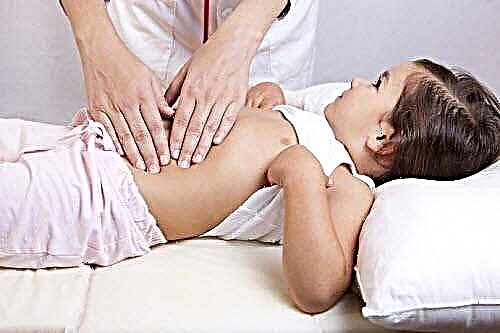
At the 16th week of pregnancy, a woman literally "flutters". The second trimester has just begun, and there is still no painful fatigue and heaviness inherent in the last weeks, but the tummy has already rounded and the expectant mother has changed her usual wardrobe for more spacious and comfortable clothes. She may go for an ultrasound examination this week. What awaits her there, we will tell in this material.
Purpose of the study
Week 16 is the period obstetricians use to calculate the due date. In fact, the child lives in the mother's womb for 14 weeks, and after the delay, exactly 3 lunar months (12 weeks) have passed. At this time, ultrasound is usually not prescribed. The first screening is in the past, it took place from 11 to 13 weeks of pregnancy, inclusive, the second is still to come.
Directions for a blood test can be given to the expectant mother this week, but doctors try to prescribe the ultrasound procedure for a later period - from 18 to 21 weeks.

However, there can be many reasons for ultrasound diagnostics in a pregnant woman. Screening studies are aimed at to identify high risks the birth of children with chromosomal pathologies, developmental anomalies, many of which are total and fatal. An ultrasound scan at 16 weeks will not pursue the goal of identifying markers of such pathologies, unless, of course, a doctor who is not satisfied with the results of the first prenatal screening sends a woman to such an expert ultrasound scan.
For the most part this week, women sign up for an ultrasound scan without the knowledge of the attending physician, to find out the gender of the child. Determining your gender from this week on is easy. The baby's external genitals are quite formed, they have grown in size, and now it is much easier to distinguish a boy from a girl.

To the ultrasound diagnostic room a woman at 15-16 weeks of pregnancy can lead to complaints about well-being - there were pains in the lower abdomen, discharge, which should not be normal. A referral for an unscheduled examination can be received by a woman carrying twins, who became pregnant during IVF, since such pregnancies require a purely individual approach.
For ultrasound, women whose uterus size does not correspond to the deadline will also be sent, in this case it is important for the obstetrician to know how the child is developing, whether intrauterine fetal death has occurred, whether there is a developmental delay.


Method of carrying out and preliminary preparation
At 16 weeks, it is most preferable to carry out an external ultrasound, which is also called transabdominal. Through the anterior part of the abdominal wall, both the child and the structural features of the placenta, umbilical cord and the uterus itself are well visualized. No preparation is required, there is no need to drink water and fill the bladder at this time, because the amount of amniotic fluid at this time allows ultrasonic waves to easily pass and be reflected.
Vaginal ultrasound also does not lose its relevance, but the doctor will examine the uterine cavity and everything that is in it through the vaginal wall only if the view through the abdomen is greatly hampered by the curvaceous forms of the expectant mother.


The doctor can use both methods if it is necessary to examine not only the child (through the stomach), but also the cervical canal and the uterine cervix (through the vagina) with the possible threat of spontaneous abortion at this time.
To undergo diagnostics, it will be enough for the expectant mother to take with her a change of shoes or shoe covers, as well as a clean diaper that can be laid on the couch. A small chocolate bar does not hurt either. There is to eat it 15-20 minutes before visiting the doctor, the child on the ultrasound scan will certainly please the mother and the doctor with active movements, since babies already really like sweets at this time.

What can you see?
On the monitor of the scanner, during the period from 15 to 16 weeks, you can see a mobile and fully formed baby. The size of the fruit, on average, is from 14 to 18 centimeters, and the weight of the crumbs is in the range from 70 to 115 grams. The child's neck stretched out, now the baby was able to turn his head to the right and left, which he actively begins to use.


The formation of facial muscles continues, the baby is mastering all new grimaces. He winks, squints, opens his mouth, frowns. But he hasn’t learned to open his eyes yet. Girls this week receive internal sexual characteristics - their ovaries descend into the pelvis. Boys so far have only external sexual characteristics - the scrotum and penis, their testicles continue to remain in the abdominal cavity.
The baby has noticeably improved coordination of movements, which is associated with the intensive formation of the nervous system and muscle-neuronal connections. Now his movements, which are clearly visible on the monitor of the ultrasound scanner, do not at all resemble chaotic swings of arms and legs... The kid can quite purposefully send the cam into his mouth or pull the umbilical cord towards himself to play a little.
It is believed that at this time, babies are already dreaming; during the resting phase, they quickly run back and forth from their eyes, covered by eyelids.
On an ultrasound scan at 16 weeks, you can see the fingers and toes. By the way, small nails are already fully formed on them. The spine is formed, almost all internal organs of the crumbs work in a regular mode. He drinks, pees, trains the lungs, the original feces - meconium - is formed in the intestines.
Decoding the results
This week, the main fetometric indicators of the child are measured. It is their proportionality and compliance with the timing that are the grounds for judging whether the baby is developing normally. At week 16, the fetometry norm looks like this:


Among the anatomical descriptions of the fetus are the main organs. The doctor must examine:
the baby's brain ventricles are not normally enlarged;
face profile - with normal development has no features;
eye sockets - visualized, normally have no developmental features;
spine - if everything is in order, the doctor writes that it is normal;
lungs, spleen, gallbladder and intestines - normal without features;
heart - has a four-chamber cut;
liver, stomach and kidneys - are present, with normal development they have no features.
Describes in detail where and how the placenta is located. Its normal thickness for this period is from 18 to 18.5 mm. The umbilical cord must have 3 vessels. The cervix should not have pathological changes, the cervical canal is normally tightly closed.

Possible problems
The size of the child does not correspond to the norm
A child can lag behind or be ahead of the average rates for a given gestational age for various reasons. Small fluctuations of a few millimeters are not considered pathology. However, if the sizes of all parameters or one of them are more than 2 obstetric weeks behind or ahead of the "schedule" by the same period, additional examination is required.
The causes of deviations in fetometric indicators can be malnutrition, developmental delays, oxygen starvation of the fetus, a tendency to large weight, pathologies of genetic origin.
Doctors will be able to answer this question in more detail after the second scheduled screening, where the woman will leave from 18 to 21 weeks.

Errors in gender determination
Such errors are not excluded. The accuracy of ultrasound examination as a diagnostic method is no more than 90%, the accuracy of sex determination at this time is about 80%. If you want to get a higher percentage of accuracy, then with the question of determining the sex of the baby to the diagnostician it is best to apply after 20 weeks. Then the probability of a correct "hit" will be within 90%.
The doctor may be mistaken due to the location of the child in the uterus. If the baby is in the breech position and at the same time sits with his back turned to the sensor, then it will be very difficult to examine the genitals.

Sometimes a mistake creeps in due to the fact that a boy can hide his penis between his legs, and he will be mistaken for a girl. A girl may be mistakenly considered a guy due to the fact that the loops of the umbilical cord will fall between her legs and will be interpreted as a penis. The probability of such errors is about 1.5-3%.
If you want to see the sexual characteristics of your child with your own eyes and not be tormented by guesswork about a strange strip on a black and white ultrasound scan, better to do 3D ultrasound. In three-dimensional form, if the baby, of course, shows the doctor his "charms", the picture does not need explanations.


Cyst of the choroid plexus of the fetal brain
Such a wording in the conclusion of an ultrasound scan at 16 weeks can lead a pregnant woman and her relatives to panic. In fact, worrying is much more harmful. A cystic fluid formation in the plexus is called only for echographic signs. In fact, the accumulation of fluid in the vascular plexus is produced by the plexus itself and does not pose any danger to the life and health of the child.
A cyst of this kind does not grow, does not degenerate into a tumor, and therefore such a diagnosis does not exist, a disease with that name is not described in medical reference books. It's just that the ultrasound doctor states the fact - there is an accumulation of fluid. Nobody is talking about pathology.

After the birth of the child, he will undergo an ultrasound of the brain, in 90% of cases such cysts resolve on their own, in the remaining 10%, doctors choose observational tactics. Cysts may dissolve a little later.


Brain asymmetry
This is how expectant mothers formulate a medical verdict on the expansion of the lateral ventricles of the fetal brain. The condition requires additional examination, since the enlarged and asymmetric ventricles can become due to hypoxia experienced by the child, intrauterine infections, foreign bodies and organ tumors.
Much depends on the degree of asymmetry and other indicators of the baby's development. Severe asymmetry may indicate the risk of hydrocephalus (along with an increase in the size of the head).
In this case, the mother will have to visit the pediatric neurosurgeon while the baby is being carried in order to assess the risks together with the specialist and make a decision on providing assistance to the child after birth.

Pictures
The 3D images show the baby at 16 weeks of gestation in more detail than the usual 2D “photo”. Twins are seen somewhat worse. The gender of the child on a 3D ultrasound at 16 weeks looks like this.
To keep pictures of the baby in the womb for a long memory, you should ask the diagnostician to give you electronic files on any medium. Pictures printed on special paper lose their sharpness and color too quickly.



